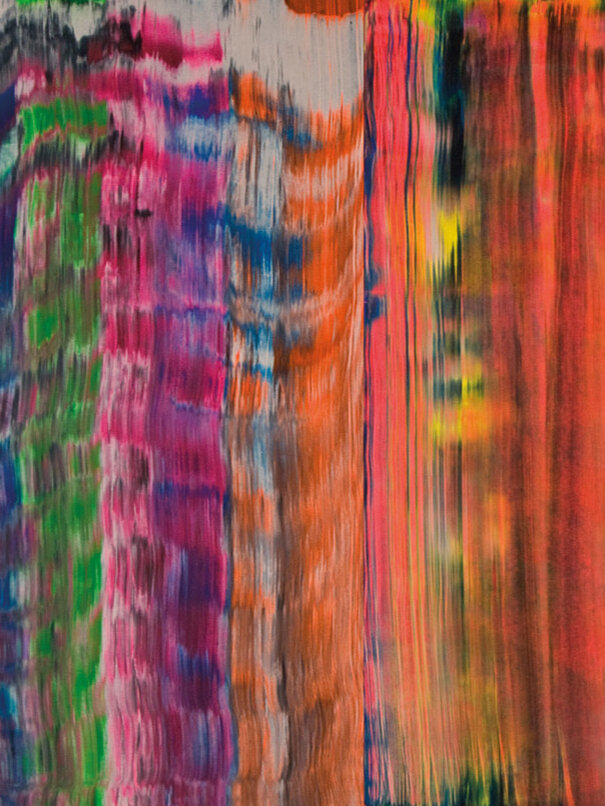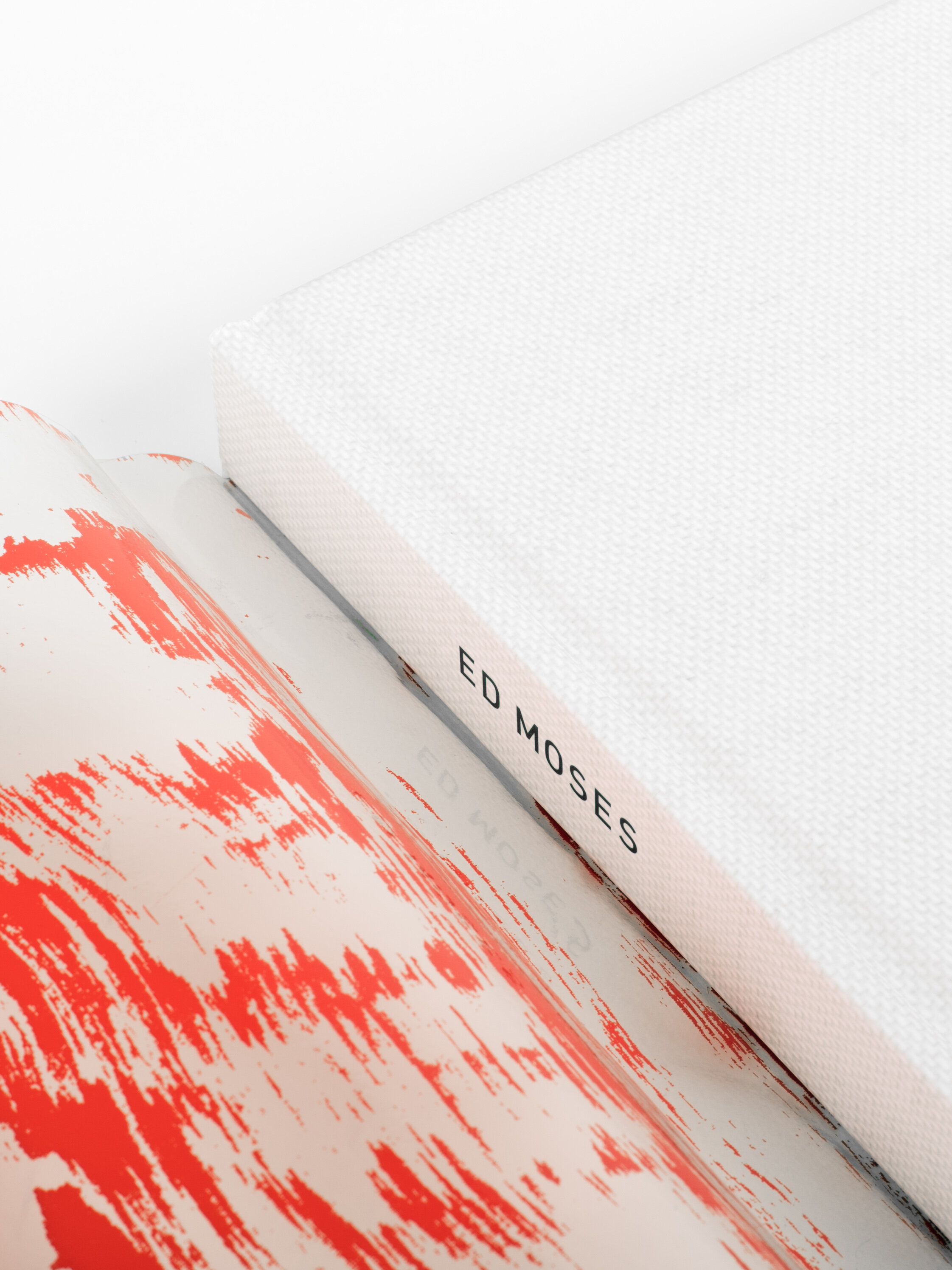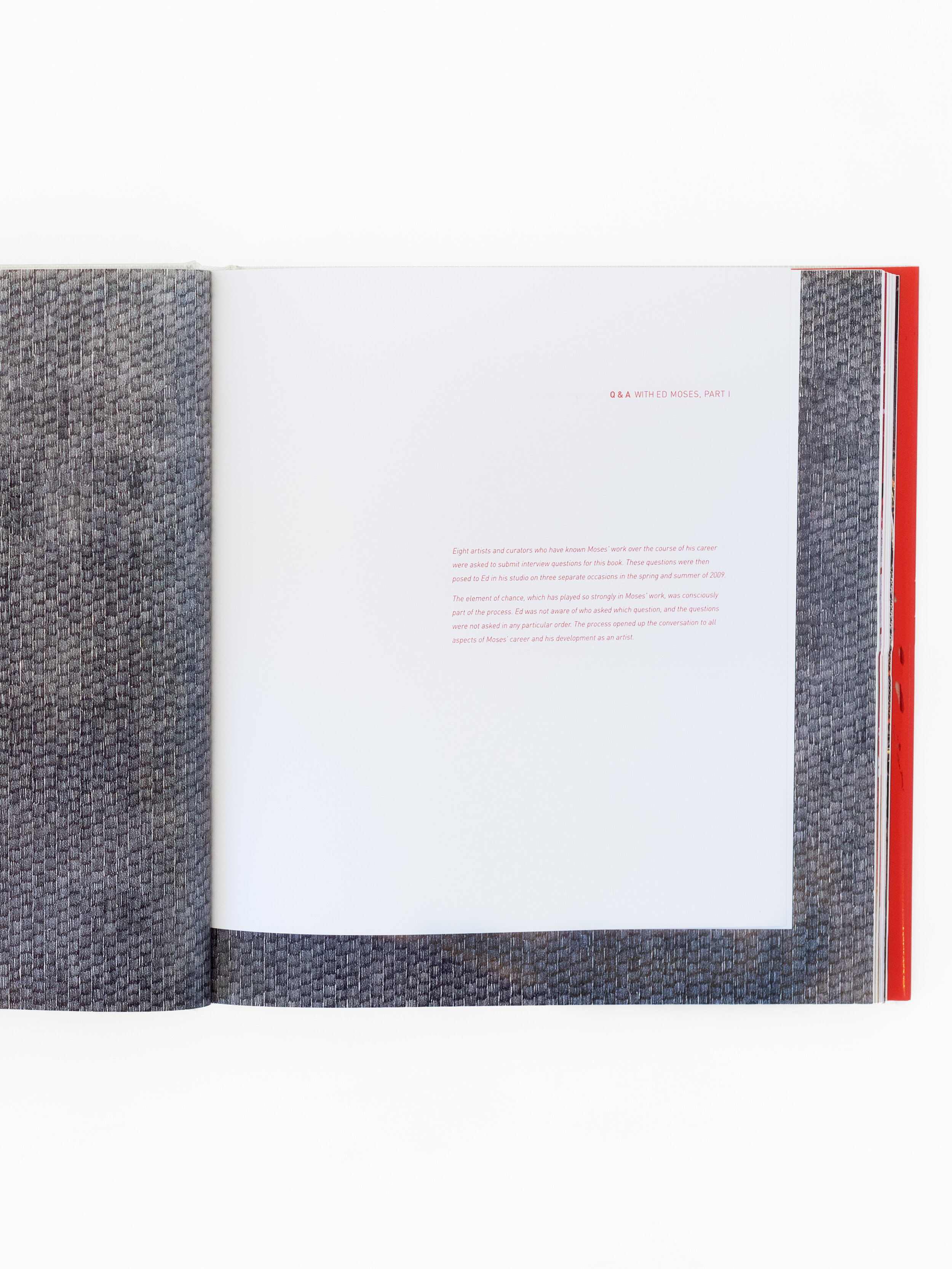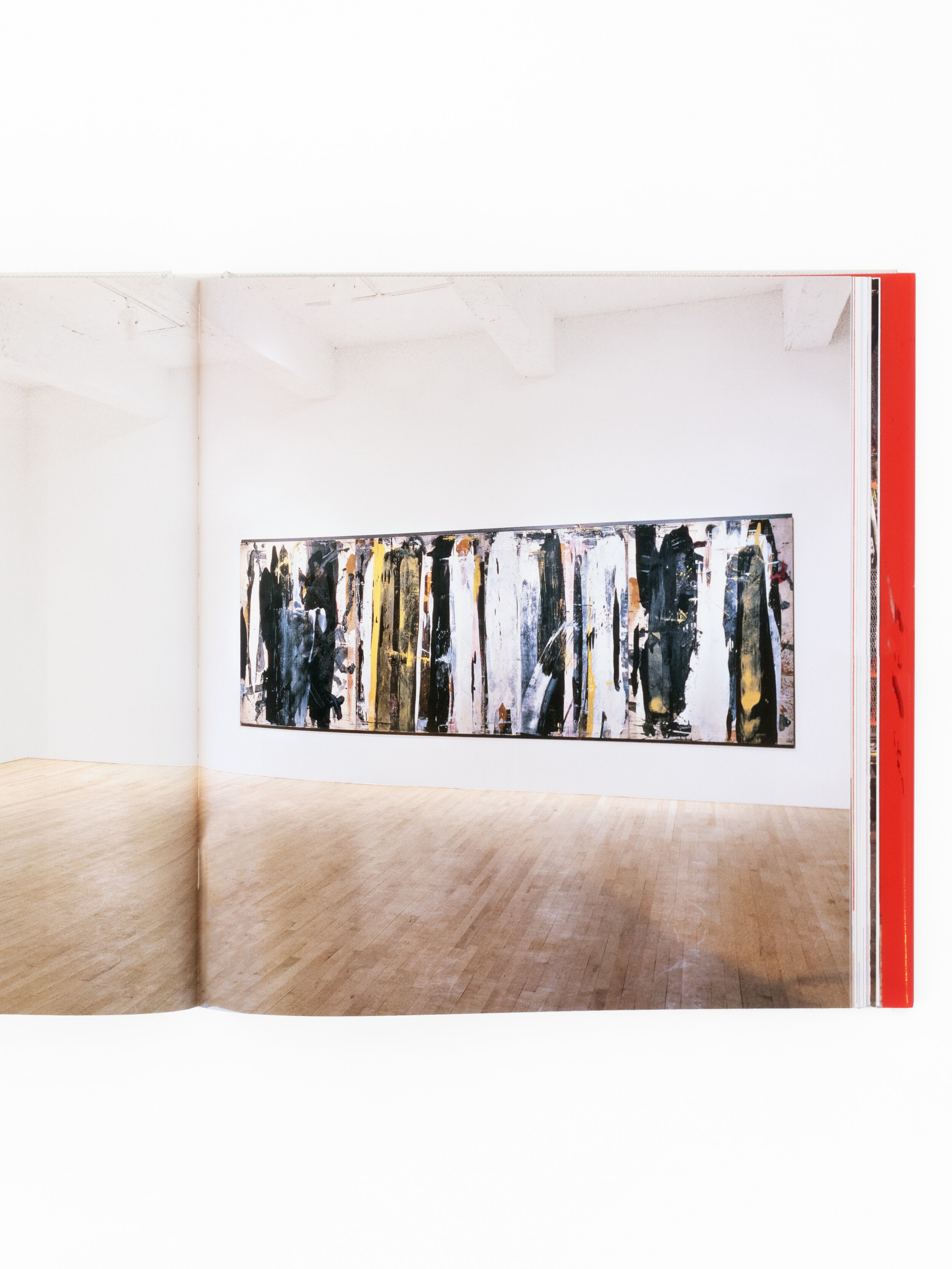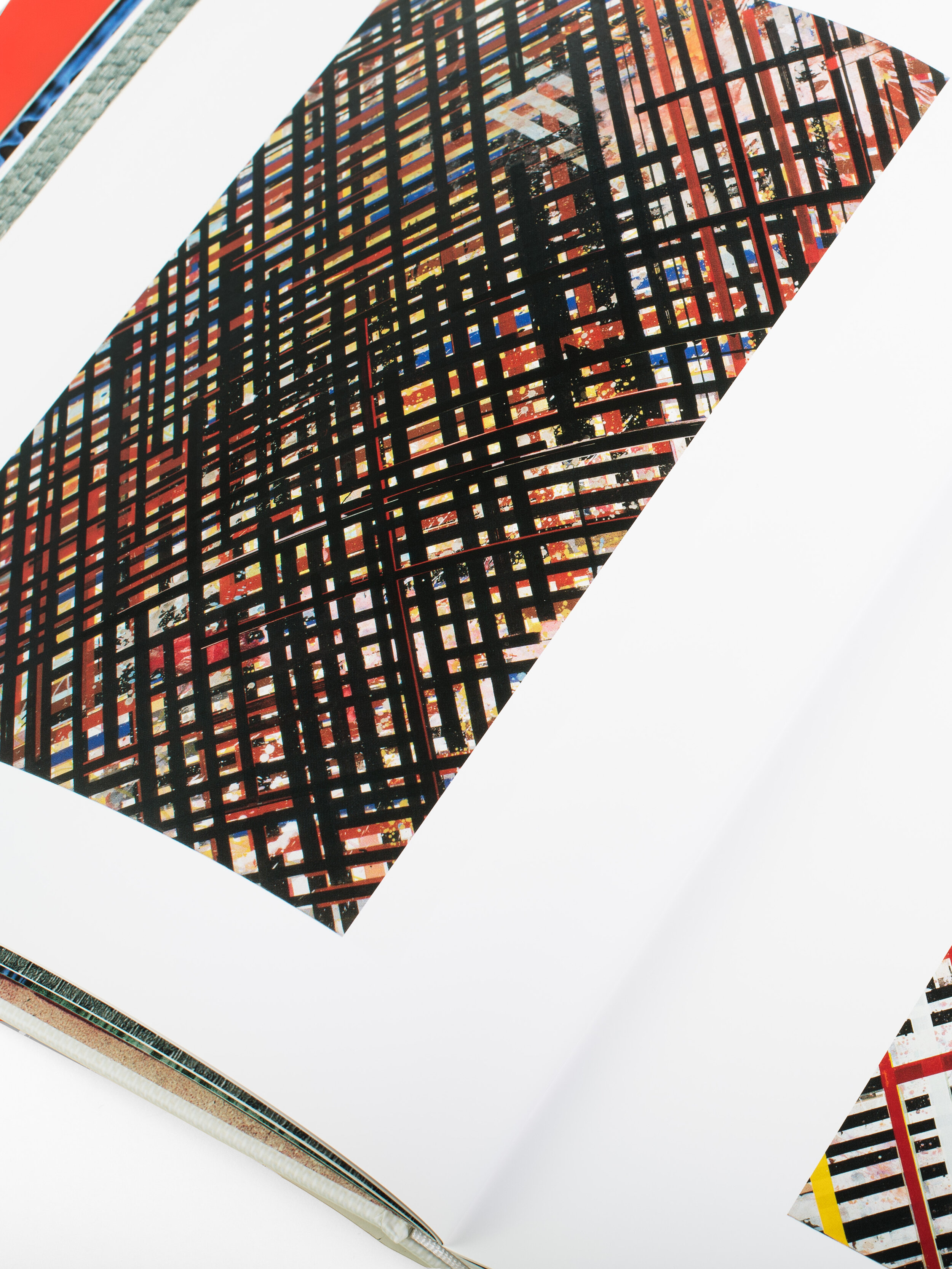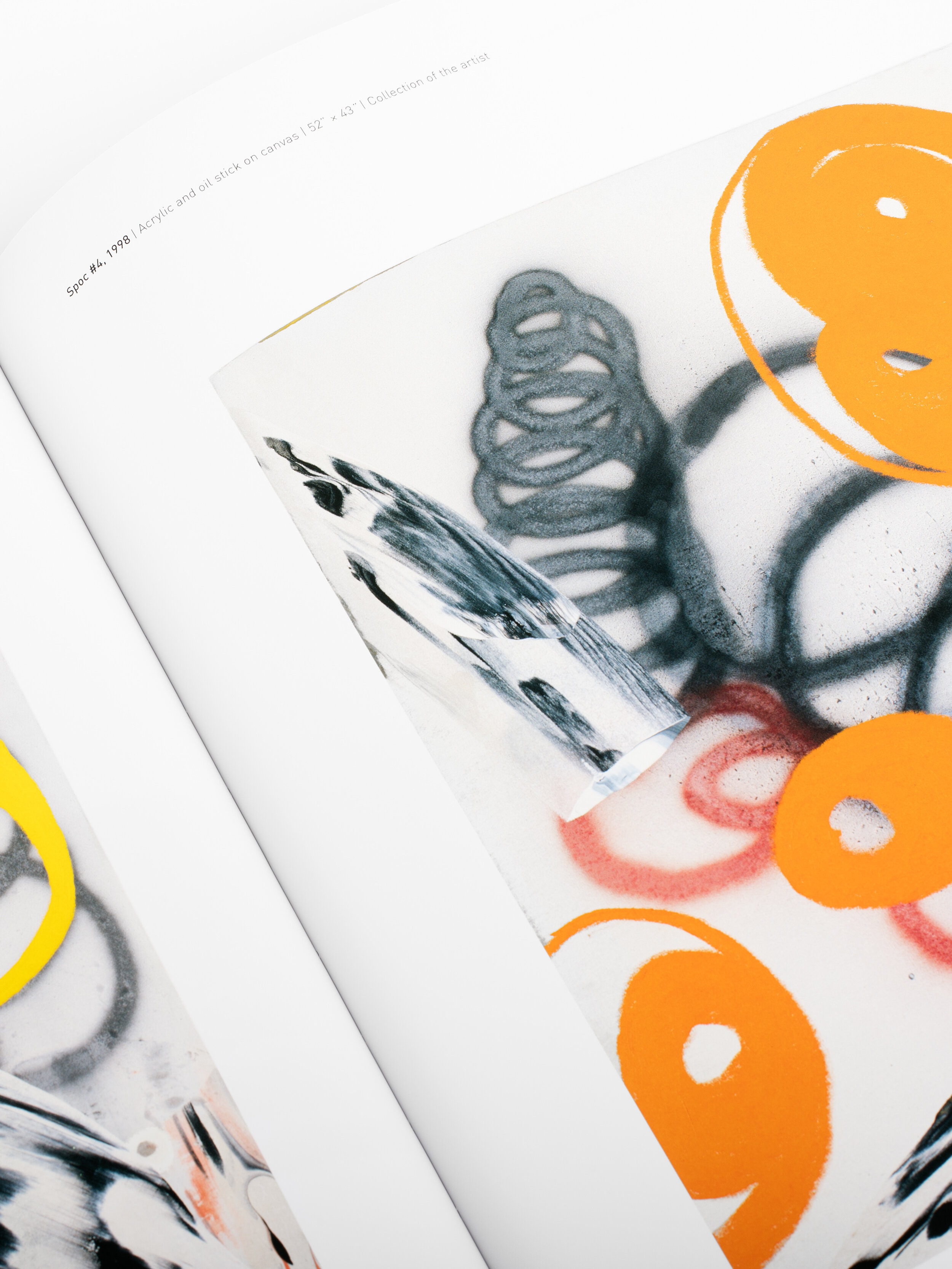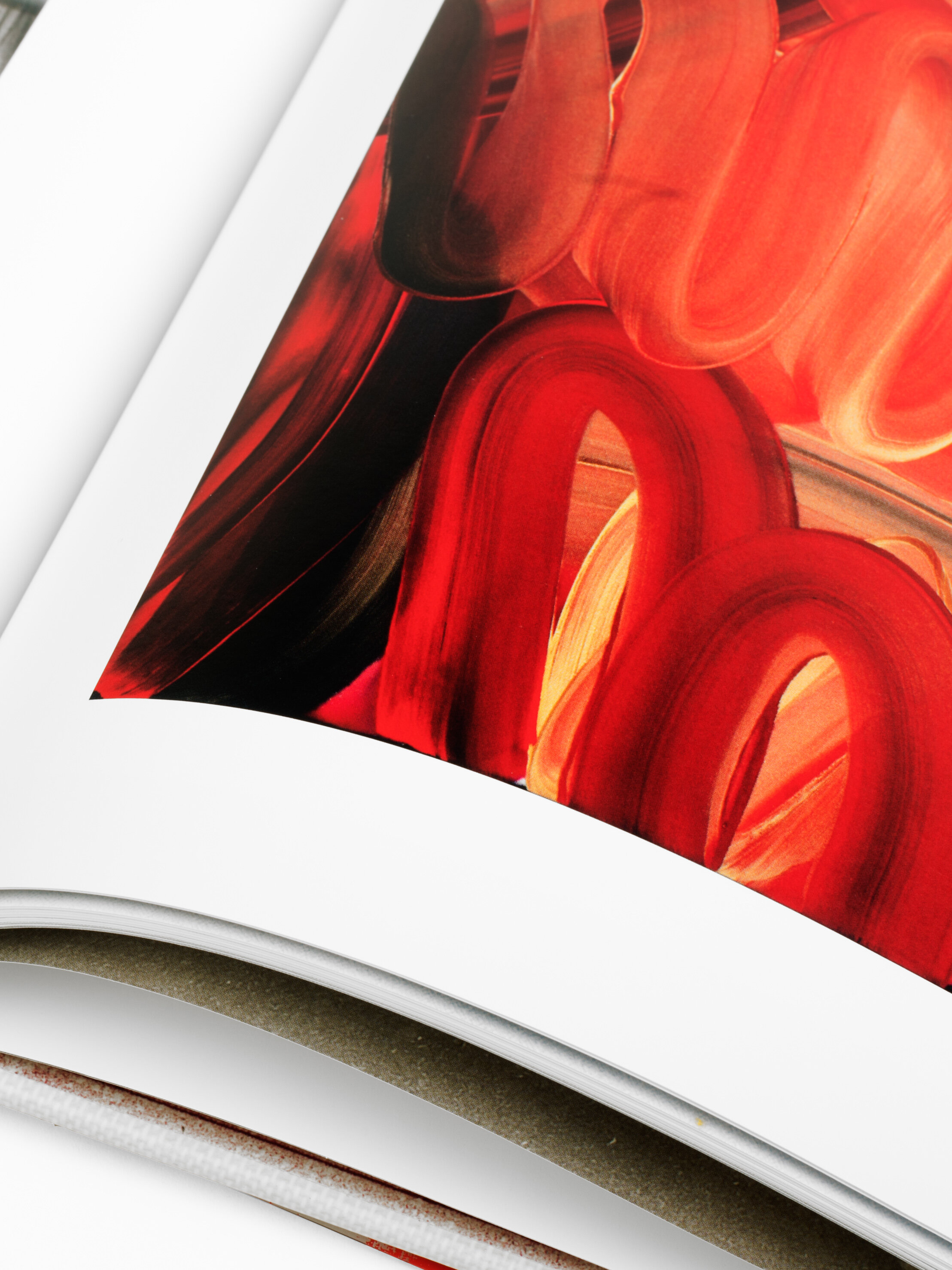-
The constants in his work are an emphasis on gesture, mark-making, and an intimate connection with his materials. In addition, almost all of Moses’ work has a sense of three-dimensionality to it. He was a serious student of Tibetan Buddhism for much of his life. This influence—the sense of living in the moment—is evident in his work.
Essay by Barbara Haskell
Foreword by Frances ColpittHardcover with dustjacket
12 x 11 inches
192 pages / 120 color illustrations
ISBN: 9781934435168Trade: $55.00 (no longer available at this price)
Rare: $250 -
Ed Moses (1926-2018) was an American painter and central figure in the Los Angeles art scene and a key promoter of Post-War, West Coast art. Best known for his eclectic range of abstract paintings, Moses’s work is unified by his interest in transitory processes and the mutability of concepts. His work constantly shifted throughout his career, building off of the theories formulated by the pieces made before. His canvases are formal abstractions using a variety of processes to experiment with surface, creating striations, cracks, marks, and blurs that sometimes juxtaposed with hard-edge geometric abstraction. A contemporary of fellow West Coast compatriots like Wallace Berman, Billy Al Bengston, and Ed Ruscha, Moses was born in Long Beach, CA on April 9, 1926. He went on to study at the University of California, Los Angeles, where he would receive both his BA and MA, and exhibit at the notorious Ferus gallery in 1958. He was the subject of a major retrospective at the Museum of Contemporary Art, Los Angeles and received a Guggenheim Fellowship in 1980. Today, his works can be found in the collections of the Art Institute of Chicago, The Museum of Modern Art in New York, and the Philadelphia Museum of Art, among others.


